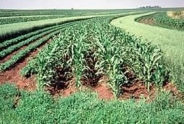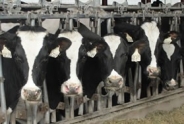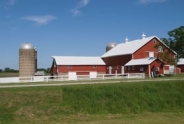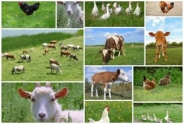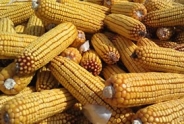The Importance of Testing Manure
The Importance of Testing Manure
By Patty Ristow, Quirine Ketterings, Dale Dewing, Peter Wright, and Karl Zaymmek of Cornell University
Forward by Amy Barkley, Livestock Specialist, SWNYDLFC
The time after harvest in the falls allows farms an opportunity to spread manure on agricultural fields to empty storages before winter and prepare fields for the spring growing season. As bunkers, lagoons, and storages are emptied, it is a good idea to test the manure for its nutrient value prior to or during spreading.
Manure nutrients vary quite a bit from season-to-season, farm-to-farm, and species-to-species. While there are published databases of manure nutrient values available to refence to calculate application rates, many come with the disclaimer of high variability. This is because even from a the same farm and species, there can be manure variances caused by age and stage of production of each animal group, diet, bedding volume and type, milk house liquid volume (dairy), amount of mortality and/or egg waste (poultry), storage time, and season. Some farmers need to bring in manure nutrients to meet their land needs. Manure that is brought in is subject to additional variables including housing system type, livestock strain or breed, management style, storage method (pit vs shed vs lagoon), removal frequency, storage conditions (temperature, humidity, use of fans or a belt drying system), use of phytases and other enzymatic compounds in the feed, and the use of implants.
While published manure values will get you in the ballpark for nutrient concentrations, testing for manure nutrients should be a part of a farm's nutrient management program. The following information on manure sampling, analysis, and interpretation is shared from Agronomy Fact Sheet #38 by Patty Ristow, Quirine Ketterings, Dale Dewing, Peter Wright, and Karl Zaymmek of Cornell University
Accurate manure analyses are essential for proper nutrient management planning but manure analyses are only as good as the sample taken. Most manure testing laboratories request a pound or quart of sample and only a very small amount of this sample is analyzed to determine the nitrogen (N), phosphorus (P) and potassium (K) content. Yet, the results are used to determine the nutrients applied across the whole farm for the spreading season. This fact sheet is a guide for getting the most accurate N, P, and K quantities from your manure testing program.
Sample from the spreader
Sampling from the manure spreader gives the most accurate representation of what is actually applied to the field. It also avoids the dangers of personal injury associated with sampling manure storages.
Solid manure
Sample by scooping manure out of the spreader with a pitchfork, shovel or plastic container and avoid large pieces of bedding. Select 4-8 scoops from different places in the spreader, mix well, and draw a sample from this mixture. For daily spread operations sample from three different loads over course of a week or month to generate three independent samples for submission to the laboratory. Solids from piles or bedded packs are highly variable and each different section of the pile or pack should be sampled separately (3 samples per section).
Liquid and slurry manure
Samples should be taken as soon as possible after loading (unless the spreader has a well functioning agitator) . If a slurry storage (>6% solids) is not well-agitated prior to spreading the nutrient content can be highly variable. In these cases sample when manure is pulled from the top, middle and bottom portions of the storage (3 samples per section), or when the manure visibly changes in solids content. Keep logs that can show to which fields manure from each section of the storage was applied. Sludge that accumulates on the bottom of storages should be tested and spread as a separate manure source.
Sample annually or every major event
If there are no previous sample records, samples should be taken at least twice during the first year and then every spreading event. New York Concentrate Animal Feeding Operation (CAFO) regulations require sampling at least once per year and spreading event.
Submit three samples
Outliers happen in manure analyses. To make sure management plans are not being based on outlier analyses, it is recommended to take at least three samples and have them analyzed separately. The three manure analyses should be compared to identify outliers and if present, outliers should be discarded when determining average manure nutrient content.
Freeze the samples
Fill the plastic sample container provided by the laboratory 2/3rds full. Keep the samples cool until they can be put in a freezer to slow down microbial activity. After the three samples are frozen, send them to the laboratory. It is best to mail samples early in the week to avoid thawing in the post office.
What to analyze?
A manure sample should at a minimum be analyzed for:
- -Total Kjeldahl nitrogen (TKN)
- -Ammonium nitrogen
- -Total phosphorus
- -Total potassium
- -Percent solids
- -Bulk density
- -Lbs/ton = % * 20
- -Lbs/ton = ppm * 0.002
- -Lbs/1000 gallons = % * 83.4
- -Lbs/1000 gallons = ppm * 0.00834
- -Lbs/1000 gallons = 0.24
- -lbs/ton Lbs/ton = 4.17 lbs/1000 gallons
Interpreting the analysis
Manure analyses can be reported in many different ways. Useful conversion factors from test results reported "as is" are:
Most manure test results are reported "as is" or on a wet basis. If reported on a dry basis, "As-is" = (dry weight / % solids) * 100
To determine manure N credits, both the ammonium-N and the organic-N content of the manure should be known, in addition to method and timing of application. For guidance in determining N credits from manure see Factsheet #4: Nitrogen Credits from Manure. To determine fertilizer equivalents of manure P and K values should be reported in P2O5 and K2O. To convert: P2O5 = P x 2.27 and K2O = K x 1.2
Using the results
Nutrient planning and fertilizer reduction
Accurate manure analyses taken annually allow a planner to use a 3-year running average or the prior year analysis for accurate planning of current-year manure applications. If the nutrient needs of the crop are known, and the spreader is calibrated, manure N, P and K can be applied with sufficient accuracy to meet crop needs and reduce the need for fertilizers. For guidance on manure spreader calibrations see Factsheet #18: Manure Spreader Calibration.
Manure Value Estimates
Accurate manure analyses allow for calculation of the fertilizer replacement value of a manure application (Table 1). Manure value estimates can be combined with fertilizer application costs for hauling distance break-even analyses or compared with manure handling operational and ownership costs to negotiate the terms of a manure export agreement. For more information on valuing the nutrients in manure see Factsheet #61: Valuing Manure N, P and K Applications.
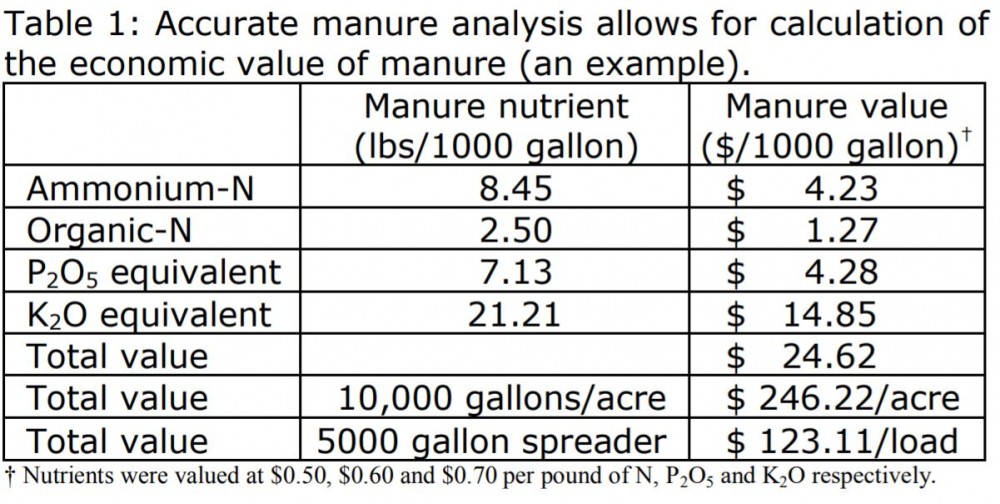
Tracking Farm Management Impacts
Testing and recording annual manure analyses can increase your understanding of the nutrient content of the manure and impacts of management changes (Figure 3).
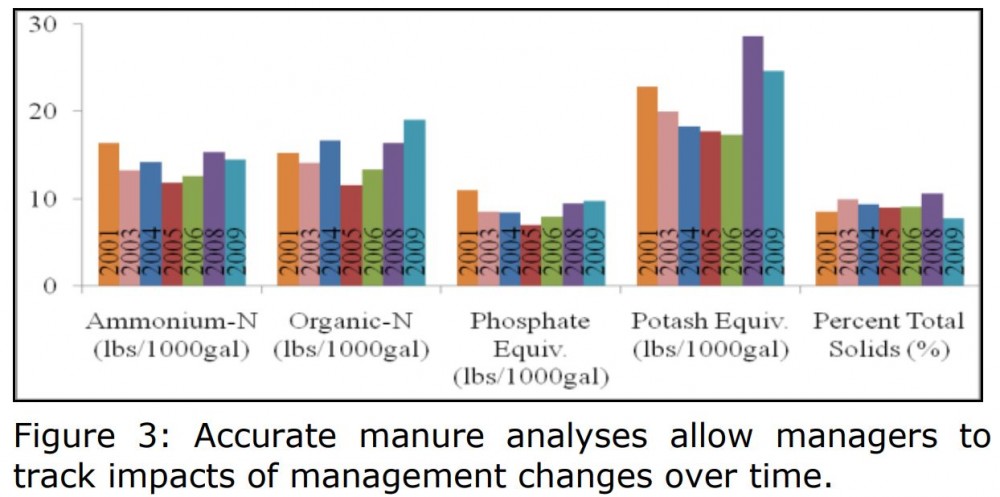
Disclaimer This fact sheet reflects the current (and past) authors' best effort to interpret a complex body of scientific research, and to translate this into practical management options. Following the guidance provided in this fact sheet does not assure compliance with any applicable law, rule, regulation or standard, or the achievement of particular discharge levels from agricultural land.
If you would like to learn more about manure nutrients or to discuss how to interpret your results, reach out to Livestock Specialist, Amy Barkley, at amb544@cornell.edu or (716) 640-0844 or Katelyn Miller at km753@cornell.edu or (716) 640-2047
Upcoming Events
IPM Strategies to Protect Corn and Soybean Seed in NY
July 30, 2025
Hamburg , NY
SWNYDLFC and Cornell IPM are hosting a grower meeting to discuss integrated pest management strategies for protecting corn and soybean seed in New York.
FAMACHA Training for Sheep and Goat producers in Woodhull NY
August 13, 2025 : FAMACHA Training in Woodhull
Woodhull, NY
Join us for a discussion and hands-on training for internal parasite integrated pest management in sheep and goats. Certification is available to all students participating in the workshop.
Cover Crop & Soil Health Field Day
August 13, 2025
Andover, NY
Please join us for a morning of hands-on learning with expert insights from local farmers, industry representatives, and extension. We will have some demonstration plots in action along with discussion about how cover crops influence soils and demonstration showing impacts on farm resiliency.
Announcements
No announcements at this time.

